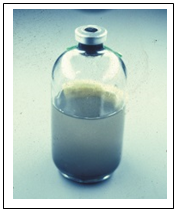
Lignin is relatively recalcitrant under anaerobic conditions due to its large molecular size and complex cross-linking, however, soluble and lower molecular weight lignin-derived fragments are released during the aerobic degradation of lignin or pretreatment of lignocellulose. While the anaerobic degradation of lingo-aromatic and related phenolic compounds to methane gas has previously been demonstrated, the microorganisms responsible have not been identified or characterized. Lignin is the most abundant naturally occurring source of aromatic compounds (lignoaromatics) and second only to cellulose as the most abundant organic carbon source in the biosphere. To effectively utilize lignin residues as a renewable feedstock for the microbial production of methane gas, a better understanding of the processes involved is required.
The goal of our work is to develop a better understanding of the processes involved in the anaerobic degradation of lignin-derived compounds so that they might be applied to any future bioenergy efforts involving microbial methane production from lignin-residues. Our objective is to identify the microbial communities and genes responsible for the degradation of phenolic compounds.
Tiffany Louie: Methanogenic decomposition of model lignin-derived compounds
Ahn Y-B, Chae J-C, Zylstra GJ, Häggblom MM (2009) Phenol degradation via phenylphosphate and carboxylation to 4-hydroxybenzoate by a new by strain of the sulfate-reducing bacterium Desulfobacterium anilini. Appl. Environ. Microbiol. 75:4248-4253.


